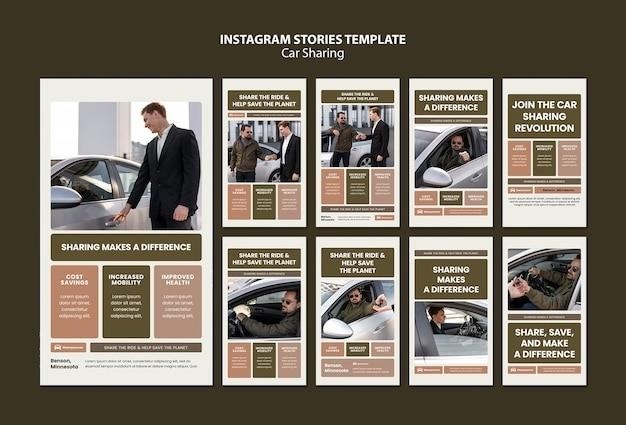10 Steps to the Sale⁚ A Car Salesman’s Guide
This comprehensive guide outlines 10 essential steps to help car salespeople achieve success in a competitive market. These steps, if followed diligently, can transform a frustrated salesman into a top performer, maximizing sales and building strong customer relationships.
Step 1⁚ Establish Rapport and Build Trust
The foundation of a successful car sale lies in building a strong rapport and earning the customer’s trust. This initial step sets the stage for a positive and productive interaction. Begin by greeting the customer with a genuine smile and warm welcome, creating an immediate sense of comfort and openness. Take the time to actively listen to their needs and preferences, demonstrating your genuine interest in understanding their requirements.
Avoid bombarding them with sales pitches or pressuring them into making a decision. Instead, focus on building a connection by asking insightful questions about their lifestyle, driving habits, and desired vehicle features. By demonstrating empathy and understanding their perspective, you establish a foundation of trust that will enhance their confidence in your expertise and make them more receptive to your recommendations. This approach transforms the car buying experience from a transactional encounter into a collaborative journey towards finding the perfect vehicle.

Step 2⁚ Qualify the Customer’s Needs
Once you’ve established rapport, it’s crucial to delve deeper into understanding the customer’s specific needs. This involves asking targeted questions to gather essential information about their driving requirements, budget constraints, and desired vehicle features.
For example, inquire about their daily commute, family size, and preferred vehicle type, such as a sedan, SUV, or truck. Determine their desired fuel efficiency, safety features, and technological preferences. Don’t hesitate to ask about their budget, both in terms of monthly payments and overall purchase price. This thorough qualification process allows you to identify the most suitable vehicle options that meet their needs and expectations. It also helps you avoid presenting vehicles that are outside their budget or don’t align with their priorities, ensuring a more efficient and productive sales experience.
Step 3⁚ Present the Right Vehicle
Armed with a clear understanding of the customer’s needs, you can now showcase the perfect vehicle. Select a few options that align with their requirements, highlighting key features that address their priorities. For instance, if they emphasize fuel efficiency, showcase models with impressive MPG ratings. If safety is paramount, emphasize advanced safety systems like lane departure warning or automatic emergency braking.
Present the vehicles in a way that is both informative and engaging. Engage the customer in a conversation, allowing them to ask questions and express their preferences. Demonstrate the vehicle’s features, highlighting its advantages. Be prepared to address any concerns or objections they may have, offering clear and concise explanations. By presenting the right vehicles in a compelling and informative manner, you can pique their interest and build excitement about the potential purchase.
Step 4⁚ Overcome Objections
Objections are a natural part of the sales process; Customers may raise concerns about price, features, or even the dealership itself. Instead of becoming defensive, view objections as opportunities to address their concerns and provide further information. Listen actively to their concerns, acknowledging their perspective. Avoid interrupting or dismissing their points.
Respond with empathy and understanding, demonstrating that you are genuinely trying to help them make the best decision. If possible, address their concerns with facts and figures. For example, if they are worried about the price, highlight the vehicle’s value, reliability, and potential for resale value. If they are concerned about fuel efficiency, provide them with specific MPG data and explain the vehicle’s fuel-saving technology. By handling objections with patience, empathy, and clear information, you can build trust and move the sale forward.
Step 5⁚ Test Drive the Vehicle
The test drive is a crucial step in the sales process, giving the customer a chance to experience the vehicle firsthand. It’s an opportunity to showcase the vehicle’s features and performance, addressing any remaining concerns. Make the test drive a positive experience by ensuring the vehicle is clean and ready to go. Before the drive, discuss the customer’s priorities and tailor the route accordingly.
For example, if they are interested in fuel efficiency, drive on a mix of highway and city roads. If they are looking for a family-friendly vehicle, take them on a route with a few turns and stops. During the drive, engage the customer in conversation, highlighting the vehicle’s features, and addressing any questions they may have. Don’t be overly pushy, let them enjoy the experience and focus on building a rapport.

Step 6⁚ Negotiate the Price
Price negotiation is a critical stage in the car buying process, and car salespeople must be prepared to handle it skillfully. It’s important to remember that negotiation is a two-way street and a successful outcome requires finding a price point that is mutually agreeable. Start by understanding the customer’s budget and what they are willing to pay.
Be transparent about the vehicle’s value and the dealership’s pricing structure. Don’t be afraid to counter-offer, but be reasonable and avoid being overly aggressive. It’s also helpful to offer incentives or financing options to sweeten the deal. Remember, the goal is to reach a price that both parties are satisfied with, ensuring a smooth and positive experience for the customer.
Step 7⁚ Close the Deal
Closing the deal is the culmination of all the preceding steps, and it requires a delicate balance of confidence, persuasion, and attentiveness. The salesperson must be able to identify the customer’s readiness to commit and capitalize on that moment.
Reiterate the benefits of the vehicle and the value proposition they’re receiving. Address any lingering concerns or doubts the customer may have, ensuring they feel confident in their decision. Offer a clear and concise closing statement that emphasizes the positive aspects of the purchase. Don’t be afraid to ask for the sale, but avoid being pushy or aggressive. A confident yet respectful approach will make the customer feel valued and increase the likelihood of a successful close.
Step 8⁚ Follow Up After the Sale
The sale isn’t the end of the journey, but the beginning of a lasting relationship. A good salesperson recognizes that follow-up is crucial for customer satisfaction and repeat business. Contact the customer within a few days after the purchase to express appreciation for their business and ensure they are satisfied with their new vehicle.
Offer assistance with any questions or concerns they may have. Schedule a follow-up appointment for a service check or maintenance, demonstrating a genuine interest in their ongoing car ownership experience. This proactive approach strengthens the customer bond, builds trust, and positions the salesperson as a reliable resource.
By actively engaging with customers after the sale, the salesperson fosters loyalty and creates the foundation for future referrals and repeat purchases.
Step 9⁚ Maintain Customer Relationships
In today’s competitive market, building and nurturing long-term customer relationships is paramount to sustained success. A satisfied customer is more likely to return for their next vehicle, recommend the dealership to friends and family, and become a loyal advocate for the brand.
Maintain regular communication with customers, even after the sale. Send out personalized birthday greetings, seasonal offers, and invitations to exclusive events. Utilize customer relationship management (CRM) software to track customer preferences and purchase history, enabling targeted communication and customized service.
Regularly check in with customers to inquire about their vehicle’s performance and offer support. By demonstrating genuine care and understanding, salespeople can foster trust and build lasting relationships that translate into repeat business and positive word-of-mouth referrals.
Step 10⁚ Stay Up-to-Date on the Market
The automotive industry is constantly evolving, with new models, technologies, and trends emerging regularly. Staying informed about the latest developments is crucial for car salespeople to maintain their edge and effectively advise customers.
Subscribe to industry publications, attend trade shows and conferences, and engage with online automotive forums to stay abreast of market trends, competitive offerings, and customer preferences. Familiarize yourself with the features, benefits, and specifications of new and used vehicles to confidently address customer inquiries and present compelling arguments.
By staying up-to-date on the market, salespeople can anticipate customer needs, provide informed recommendations, and ultimately enhance their sales performance. The ability to offer valuable insights and expertise will elevate their credibility and foster customer trust.



